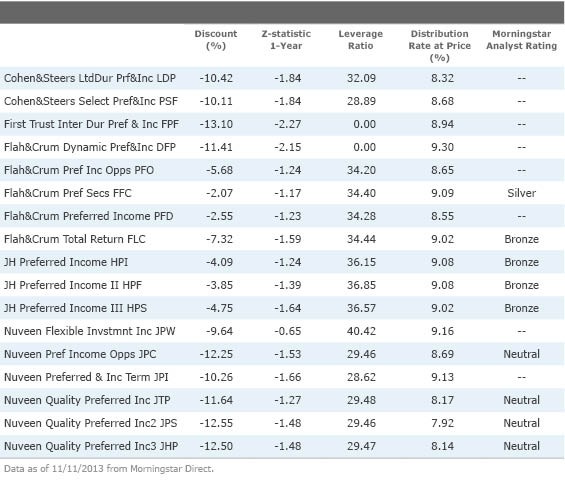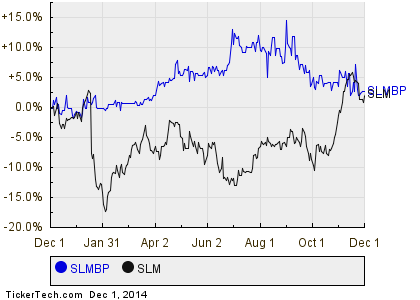New Preferred Stocks How To Buy Shares For A Discount Below Par
Post on: 16 Март, 2015 No Comment

Due to some interesting timing, 2012 is likely to be a banner year for new preferred stock issues. Because many new preferreds are expected to be introduced throughout the year, it is important for preferred stock investors to understand a little known technique that allows you to purchase newly issued preferred stock shares for a discount.
As I am about to explain, savvy preferred stock investors are able to buy shares of newly issued preferred stocks for a market price below par. It’s easy to do but surprisingly few preferred stock investors take advantage of this technique and end up paying more than they need to for their shares.
Bumper Crop Of New Preferreds For 2012
Most preferred stocks become callable five years after they are first introduced to the marketplace. When retiring (calling) older preferred stock shares companies will frequently issue a new preferred stock at today’s lower rates and use the proceeds to call their older, more expensive issues (they refinance).
The Global Credit Crisis pushed the dividend rates of preferred stocks up between 2007 and 2009, ultimately peaking at 9.6% in July 2009. With their five year call dates, these crisis-era issues start becoming callable this year.
This timing, combined with the Federal Reserve’s monetary policy of historically low-to-no interest rates, is expected to produce a bumper crop of new preferred stocks as companies introduce new issues this year in order to call those from 2007.
Real Estate Investment Trust companies should be especially active since they benefit more directly than most from low rates[1]. There were 62 new preferred stocks issued during 2011 paying an average annual dividend of about 7%[2] from a diverse array of companies such as: Public Storage (NYSE:PSA ), DuPont Fabros (NYSE:DFT ), Vornado (NYSE:VNO ), Associated Bancorp (ASBC), Gastar Exploration (NYSEMKT:GST ), Seaspan (NYSE:SSW ) and many others.
Just three weeks into 2012 the action has already started with several new issues being offered to preferred stock investors. As crisis-era preferred stock issues now become callable, knowing how to purchase shares of newly issued preferred stocks for a discount is likely to come in especially handy throughout this year and beyond.
Buyers Favor Newly Issued Preferred Stocks
Because most newly issued preferred stocks cannot be retired by the issuing company for the first five years, many preferred stock investors seek to purchase newly issued shares since doing so positions them for a five year dividend payout.
This demand for newly issued preferred stock shares tends to create upward pressure on the market price during the early days of trading, just after the new preferred stock starts trading on the New York Stock Exchange, forcing many preferred stock investors to pay more than the security’s par value (which is usually $25 per share so I will use that value throughout this article).
For example, the series P preferred stock from Public Storage started trading on the NYSE under the trading symbol PSA.PP on October 12, 2010[3]. PSA.PP showed an opening price of $25.34 that day, $0.34 over par. This is typical for newly issued preferred stocks and very disappointing for preferred stock investors looking to buy new shares for less than their $25 par value.
Why is buying shares for less than par important? Since the issuing company will pay shareholders $25 per share when retiring the shares, preferred stock investors who purchase their shares for less than $25 add a layer of principal protection and position themselves for a downstream capital gain (in the event of a call).
So how does a preferred stock investor purchase shares of a newly issued preferred stock below $25 per share?
Creating A New Preferred Stock
Like many things, knowing how to buy newly issued preferred stocks at a discounted price below par is a matter of having information that most others either do not have or have, but fail to use.
When a company issues a new preferred stock a group of investors (underwriters) pool their money (often hundreds of millions of dollars) and buy the new shares from the issuing company. The company also files an application with the New York Stock Exchange (typically) for a new trading symbol under which the new shares will be trading once the NYSE approves the application.
For a new preferred stock with a par value of $25 per share, the underwriters typically pay about $24.25 per share, receiving a $0.75 per share discount from the issuing company. This discount is published in the prospectus of the new preferred stock issue.
For example, in October 2010 the underwriters for PSA.PP purchased the 4.8 million new shares from Public Storage for $24.2386 per share (see page 1 of PSA.PP’s prospectus at the SEC).
The underwriters, now out millions in cash, are understandably very anxious to sell the shares and are not interested in waiting for someone at the NYSE to get around to approving the trading application and assigning a trading symbol.
To speed up the process, the parties involved use a less formal trading venue called the Over-The-Counter (OTC) stock exchange. The new shares will be sold by the underwriters to dealer/brokers (wholesalers) using a temporary trading symbol on the OTC for about $24.50 or so per share for several days or even for a few weeks before the shares appear on the NYSE.
For all of the same reasons, the dealer/brokers are just as anxious to unload the shares as the underwriters were and will usually sell them to a buyer, any buyer . for about $24.75 per share or so, but below par in almost all cases.
Buying Shares Below Par
It is at this point in the process that you, armed with your web browser and an online trading account, can enter the action and purchase shares of a newly issued preferred stock for a discounted price below par. Remember, once the shares begin trading on the NYSE under their new permanent trading symbol, the market price tends to be a bit above $25 per share.
By purchasing shares of a newly issued preferred stock while it is still trading on the OTC stock exchange, preferred stock investors can effectively put a piece of the original $0.75 per share underwriter discount into their own pocket[4].
Take a look at how this played out with PSA.PP in October 2010. This chart is fairly typical of the market price behavior of newly issued preferred stocks.
Most preferred stock investors were entirely unaware of the shares until several weeks after PSA.PP’s introduction on October 4, 2010. The new shares traded on the OTC until October 12, 2010 for less than par under the temporary trading symbol PSAPL. Any preferred stock investor could have purchased the new shares for less than $25 per share during this period, the dealer/brokers being more than happy to fill buy orders as soon as possible.
After the new shares appeared on the NYSE on October 12, 2010, the increase in visibility and, hence, demand pushed the price up above par (with a few exceptions).

2007 — 2009: The Crisis That Keeps On Giving
When combined with our current low-to-no interest rate environment, the fact that most high dividend rate crisis-era preferred stocks have a five year call date has created a unique opportunity for preferred stock investors. These crisis-era preferreds, issued between 2007 and 2009, reach their call dates between 2012 (now) and 2014.
According to the Federal Reserve, the low interest rates that were put in place in the wake of the Global Credit Crisis are going to be with us for at least another two years (2014). Note how that window of low interest rates happens to line up perfectly with the call dates of crisis-era preferreds.
This coincidental timing has opened the door for a bumper crop of new preferred stock issues starting right now as companies seek to refinance the expensive preferreds issued throughout the crisis at today’s lower dividend rates.
While interest rates on bank CDs have plunged to about 1.2%[5], the dividend yields offered by the highest quality[6] preferred stocks have settled at about 7%, equal to their long-term average[7].
By taking advantage of the pre-market trading on the Over-The-Counter stock exchange, savvy preferred stock investors can easily add newly issued preferred stock shares to their portfolios, earning annual dividends of about 7%, for less than $25 per share.
Footnotes:
[1] See REIT Preferreds: An Attractive Alternative To Big Bank TRUPS In 2012 for an explanation of why REITs benefit more than most from low interest rates.
[2] Includes traditional, trust and third-party trust preferred stocks issued during 2011. Average does not include Nuveen municipal bond-based securities. Source: 2011 preferred stock data from CDx3 Notification Service database . Disclaimer: The CDx3 Notification Service is my preferred stock email alert and research newsletter service.
[3] See Seeking Alpha’s Preferred Stock Trading Symbol Cross-Reference Table to see how your online service denotes preferred stock trading symbols.
[4] A word of caution here. The OTC stock exchange is not as automated as the NYSE so some online brokerages interface with the OTC more gracefully than others. You may have to put a phone call into your broker to be sure that you are getting the best price. But the bargains that you can get by doing so are usually well worth the call.
[5] 24-month certificate, ending December 2011 average APY. Source: BankRate.com. See Fed Policy Delivers Stable Prices And 7.3% Preferred Stock Dividend Yield for chart.
[6] High quality preferred stocks are those that meet the ten risk-lowering selection criteria from chapter 7 of my book, Preferred Stock Investing. For example, high quality preferred stocks (A) offer cumulative dividends (if the issuing company skips a dividend payment to you they still owe you the money; their obligation to you accumulates), (B) are rated as investment grade and (C) are issued by a company that has a perfect track record of never having suspended a preferred stock dividend. For more about how to select, buy and sell the highest quality preferred stock read my October 24, 2011 Seeking Alpha article titled Preferred Stock Investing: A Simple Guide To 7% Yield.
[7] Source: Preferred Stock Investing, Fourth Edition, page 244.
Disclosure: I have no positions in any stocks mentioned, and no plans to initiate any positions within the next 72 hours.














